
Castling
Castling is one of the most important special moves in chess. It is a unique, interesting, and essential move to understand. There are lots of rules to follow in order to castle correctly, but have no fear: they are easy to learn!
Here is everything you need to know about castling:
- What Is Castling?
- How Do You Castle?
- Other Rules Of Castling
- Why Is It Important To Castle?
- Conclusion
- Video Lesson
What Is Castling?
Castling is a special move in chess where you do multiple unique actions. First of all, it is the only move where you may move two pieces in the same move! Secondly, castling is the only time in chess when it is legal to move the king more than one square! Third, it is the only move that both develops your rook and protects your king. Castling can be performed on the kingside (notated as 0-0) or queenside (notated as 0-0-0).
You must be wondering, how do we castle? Let's find out!
How Do You Castle?
Castling involves the king and a rook. As mentioned, there are many rules to castling: The first is that you may only castle if you haven't moved your king and your rook (on the side where you want to castle). The second rule is that no piece can be between your king and the rook on the side where you want to castle. In the diagram below, we can see that nothing is between White's king on e1 and White's rook on h1.
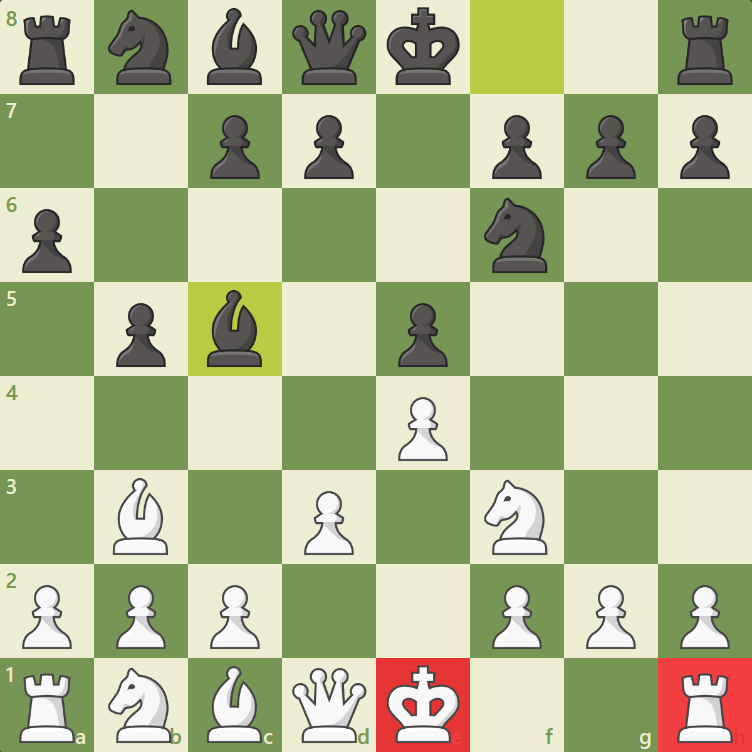
Since there are no pieces in between the king and the rook and because neither piece has moved, White can castle kingside! How do we do this? The white king moves two squares (from e1 to g1), and the white rook moves from h1 to f1. On Chess.com, you can perform castling in one of three ways:
- dragging your king from the e1-square to the g1-square,
- dragging your king from the e1-square to the h1-square,
- or clicking the king on the e1-square and clicking again on the g1-square.
Whichever way you do it, the king goes to g1 and the rook swings over to f1 automatically. Here is a diagram of the above moves after kingside castling:
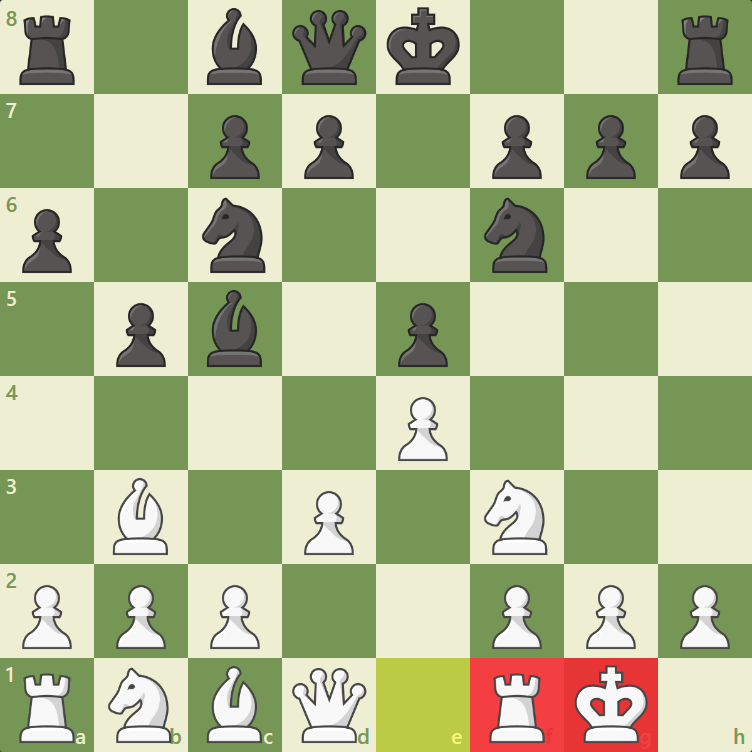
The same rules that we have covered so far for kingside castling apply to queenside castling. In the diagram below, we can see that no pieces are between the white king on e1 and the white rook on a1 (and neither the king nor rook has moved):

So how do we castle queenside (again as White)? We still move the king over two squares (this time from e1 to c1), and then the rook moves from a1 to d1. On Chess.com, you simply:
- drag your king from the e1-square to any of: the c1-square, b1-square, or a1-square,
- or click the king on the e1-square and click again on the c1-square or b1-square.
Again, the rook automatically moves to d1 after the king goes to c1. Here is a diagram of the above moves after queenside castling:
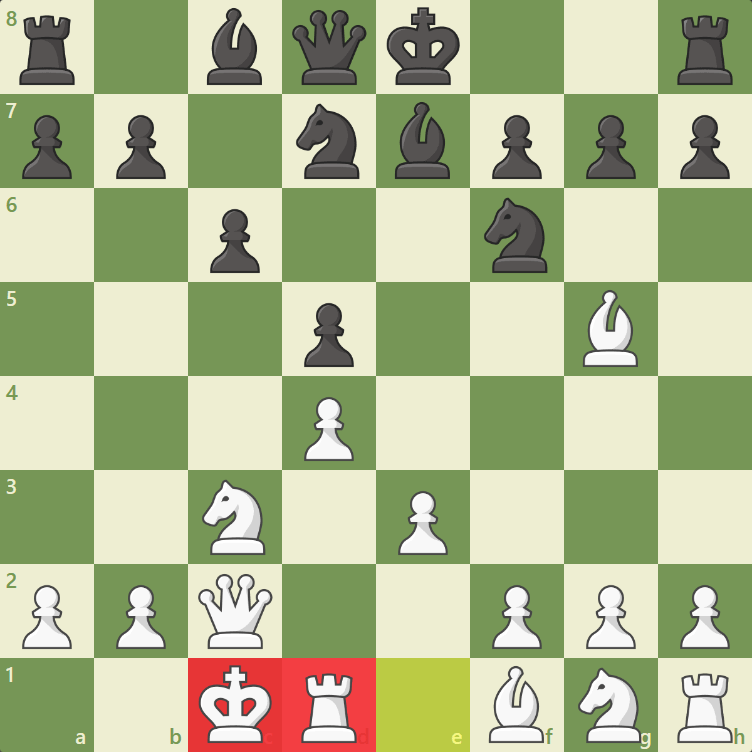
So now that you know how to castle, there are some other rules to learn.
Other Rules Of Castling
Sometimes the first two conditions (no pieces are between the king and rook, and neither the king nor rook has been moved) are satisfied, but we are still unable to castle. Here are three additional rules of castling:
1) If you are in check, you cannot castle. You must first get out of check before you can do anything. In the diagram below, the bishop on b4 puts the white king is in check, so White is unable to castle.
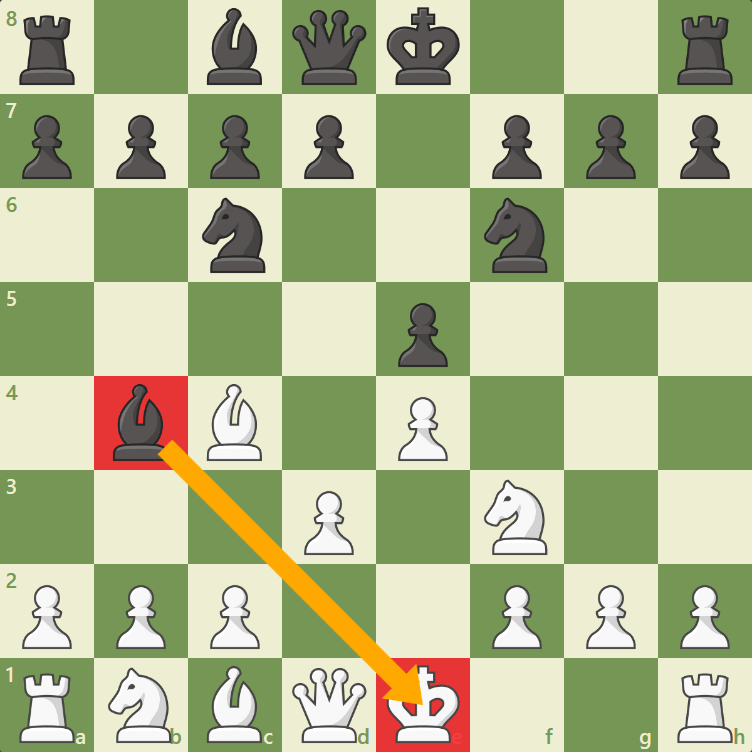
2) You cannot castle if any square the king is moving through is attacked by your opponent's pieces. In the diagram below, the white king cannot castle kingside because Black's bishop on a6 attacks the f1-square.
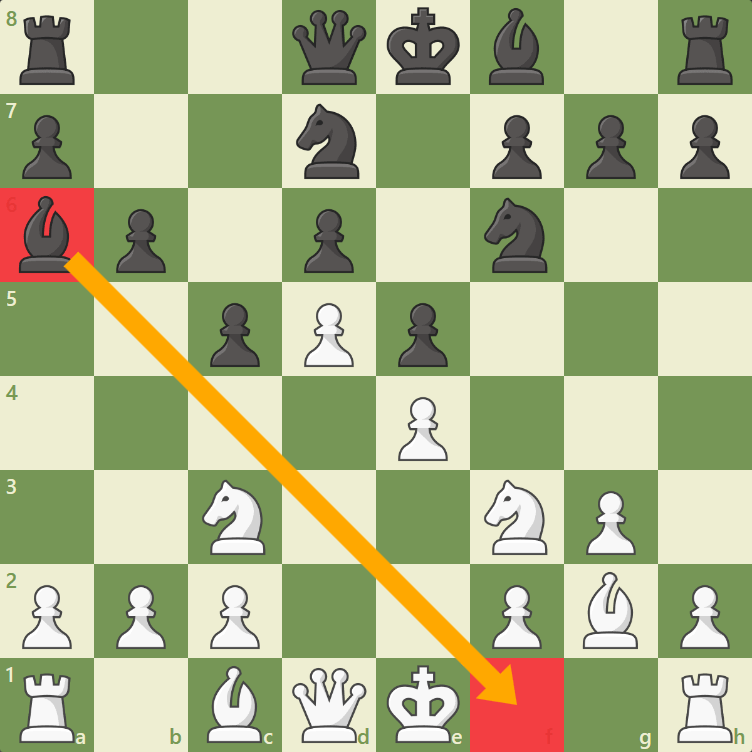
3) You cannot castle into check. This rule is easy to remember, since moving into check is illegal in the first place! In the diagram below, the white king cannot castle because Black's bishop on c5 attacks the g1 square.
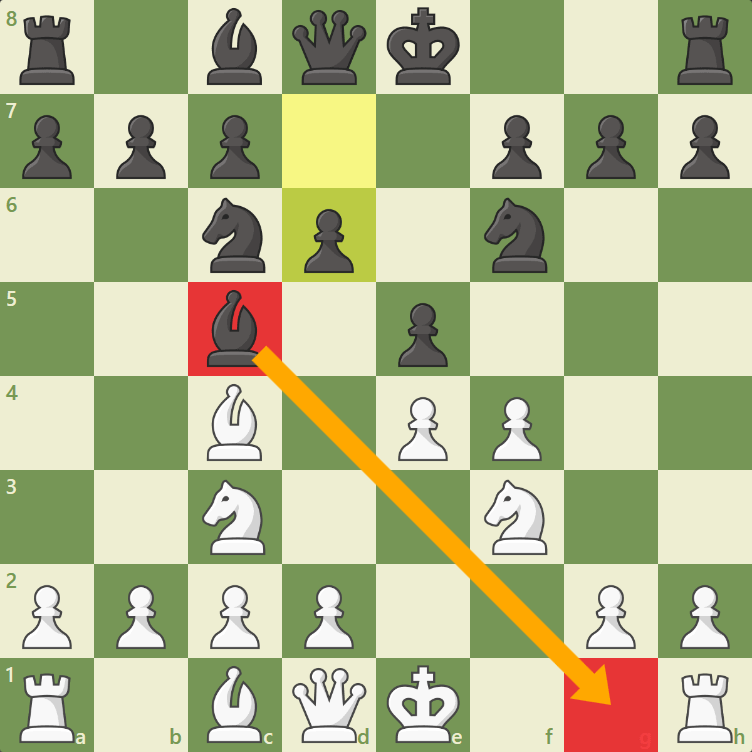
A great way to remember these rules of castling = you cannot castle out of, through, or into check!
Why Is It Important To Castle?
Now that you understand how and when you can perform this special move, we can discuss why it is so important. Castling gets your king out of the center and protected by pawns. Castling also lets your rook into the game. In the following position, White has just castled kingside:
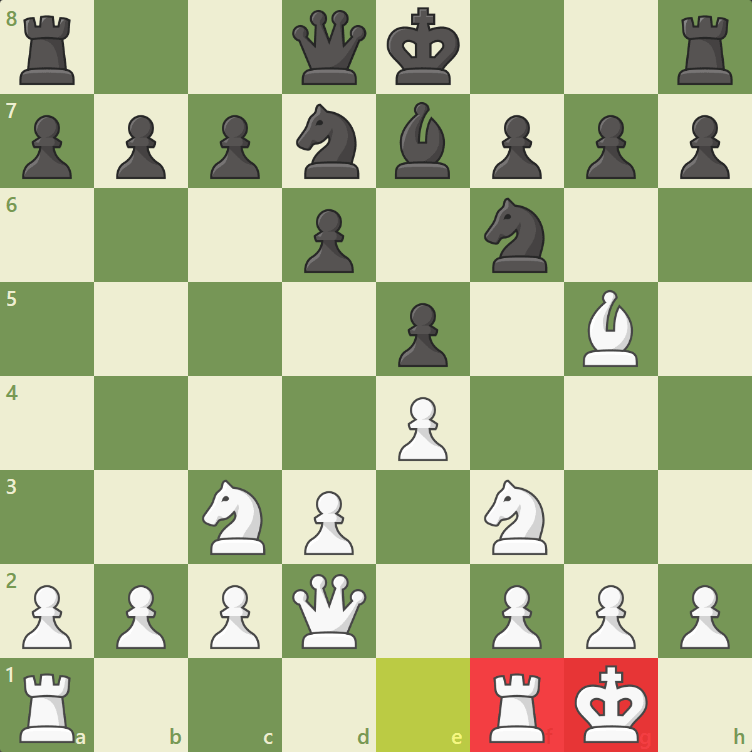
Note how White's king is very safe on g1 and is protected by the f2, g2, and h2 pawns. We can also see that castling has connected the white rooks, which can now coordinate better. Getting your king out of the center to safety while also developing a rook is a great two-for-one move! By removing your king from the center, you avoid a lot of quick checkmates!
Conclusion
You now know what castling is, how to castle, when you can castle and why it is important. Use this new knowledge in your own games, and may your king stay safe and your rooks active!
Watch the Video Lesson
Reading an article is a great way to learn new material, but watching a video lesson can be just as helpful! Check out the short video lesson below to reinforce the concepts of castling! Try it out!






